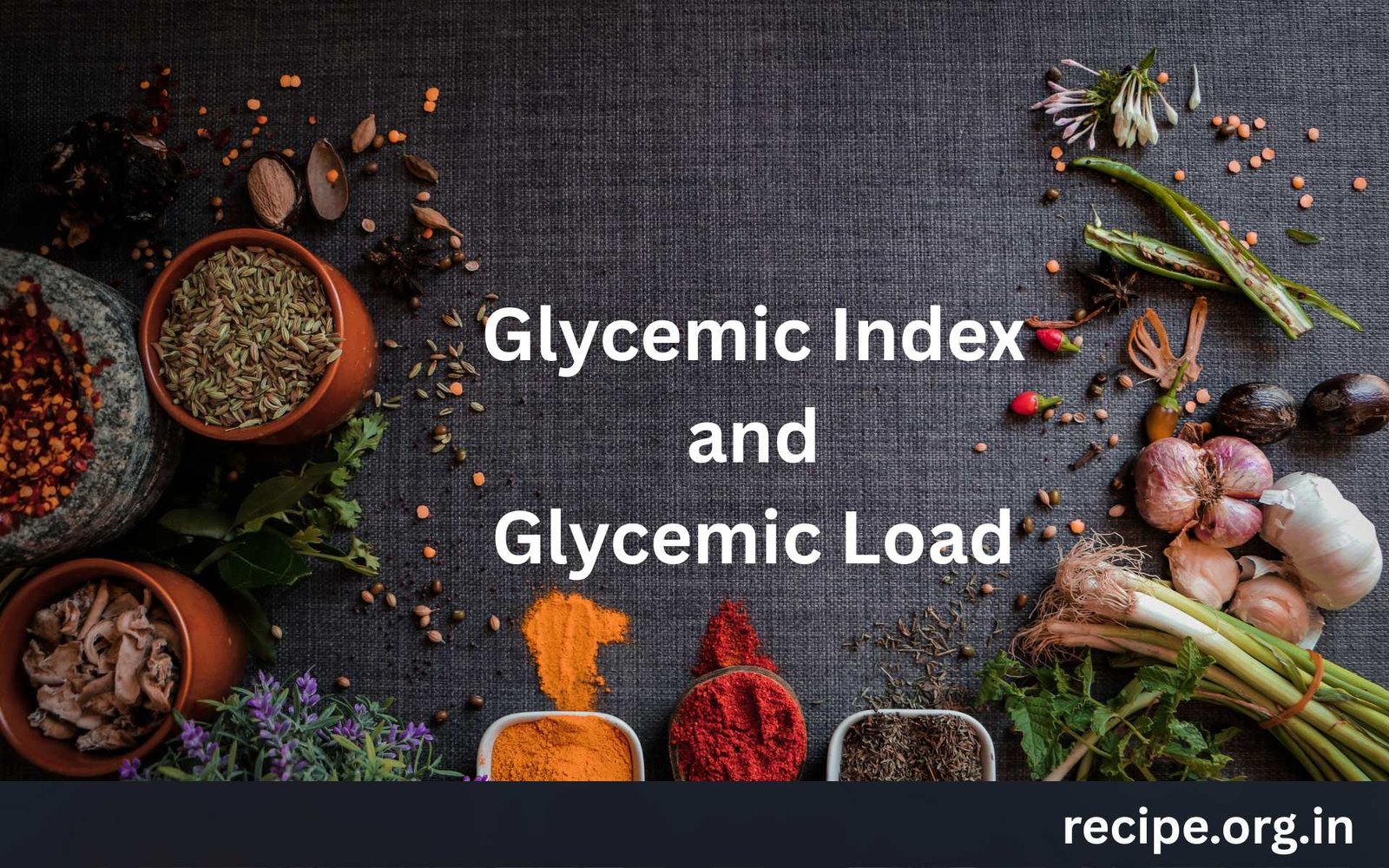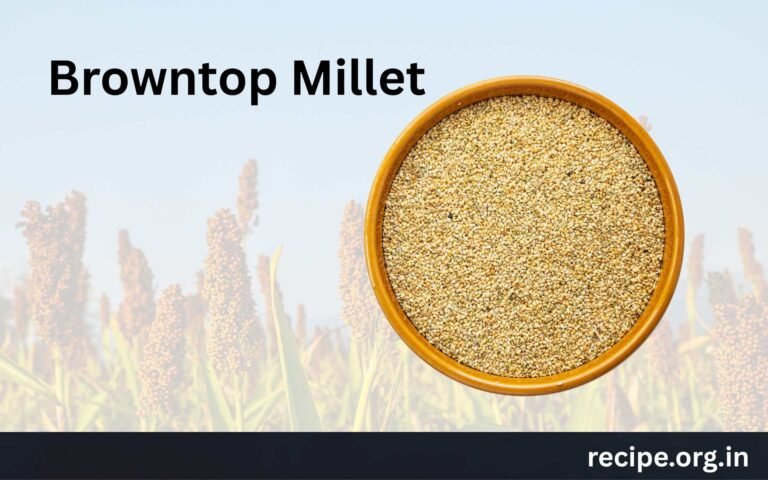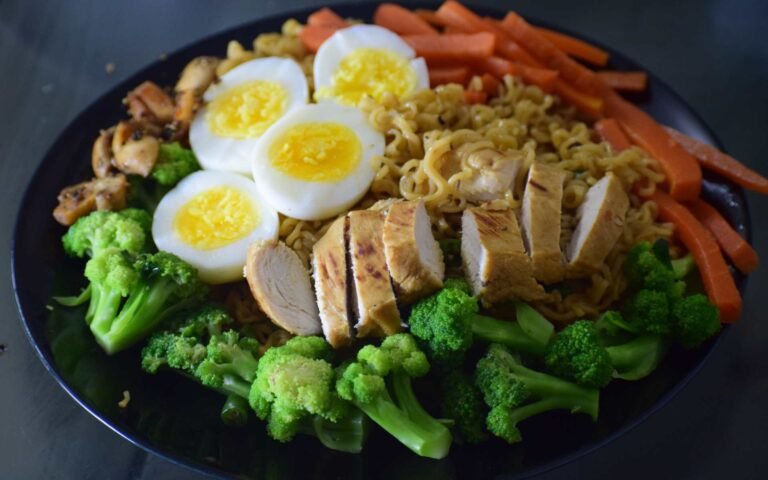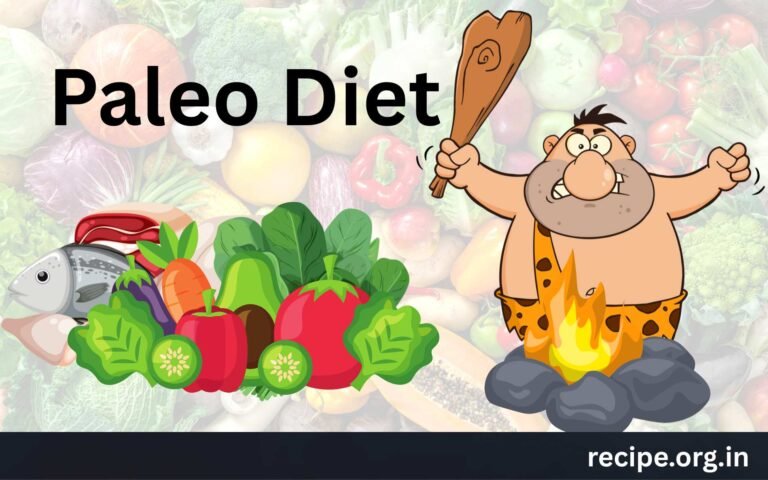Table of Contents
Introduction
Glycemic Index and Glycemic load of foods are critical information that helps you understand which foods are good for you and which ones to avoid or eat in moderation. The chart is especially important for people who have diabetes, heart conditions, are on a weight management journey or simply those who want to limit their carbohydrate for any reason.
Glycemic Index
Glycemic Index is a very important chart that shows how fast will your blood sugar spike after having that food. Higher glycemic index means the food will very quickly raise your blood sugar causing a spike. Elevated sugar levels causes different types of other diseases like heart conditions, worsening of eyesight, and other health issues in humans.
Instead of the traditional categories of 0-55, 55-70, and 70-100 for low, medium, and high glycemic index (GI) foods, I’ve redefined the labels to better guide diabetic choices:
- Low GI Foods: These foods are generally safer for diabetics, offering a more stable blood sugar response.
- Moderate GI Foods: This can be enjoyed in controlled portions to manage blood sugar levels effectively.
- High GI Foods: Best avoided or consumed sparingly to minimize blood sugar spikes.
GI Values Change With Ripeness, Cooking, and Processing
The Glycemic index of foods varies with the time of cooking, the degree of processing that the food goes through, and the ripeness of that fruit.
With cooking, the complex fibers and molecules break down into more simpler fibers and carbohydrates. This makes digestion easier and hence, the blood glucose is raised quickly.
Further, with the degree of processing, there is an increase in the time it needs to break down the food, and hence processing leads to a higher GI value, For example, whole wheat flour, which is a more processed form of wheat has a GI value of 53-60 while bulgur or broken wheat has a lower GI of 46.
Further, the third thing that increases the GI value is the degree of ripeness. More ripe fruits and vegetables have a higher GI compared to the raw ones. This is true for both vegetables and fruits. Therefore, for diabetics, it is always advised that we eat less ripe fruits and vegetables.
A rule of thumb for this could be, that the more chewy the food, the lower will be its GI.
Glycemic Load
A given food’s glycemic load(GL) measures the total blood sugar released into the blood. This is often paired with the food’s glycemic index to understand the impact of that food on blood sugar levels. Usually, foods with high glycemic index have high glycemic load, too. However, there is an exception.
Glycemic Load is the number that shows you how much and how quickly a food can release glucose in your blood. Since the formula for Glycemic Load also contains its Glycemic Index, the Glycemic Load for a food item is a complete measure of how good or bad that food is for you.
The glycemic load (GL) of foods is divided into three categories:
- High GL – 20 and above
- Moderate GL – 11 to 20
- Low GL – 0 to 10
Diabetics like me, who do not use any medication and rely on food and exercise to reverse diabetes, should consume foods that have a glycemic load of 10 or less. Foods with a glycemic load higher than 10 and below 20 can be consumed in moderation.
How to Calculate a Food’s Glycemic Load
To calculate a food’s glycemic load, multiply its glycemic index values by the amount of carbohydrates contained in a 50-gram serving and then divide the result by 100.
The glycemic load for whole wheat is = 62(its GI) x 37g(carbs in 50 grams of whole wheat) / 100 = 22. Hence, the glycemic load of 3-4 thin whole wheat chapati is 22.
Glycemic Index and Glycemic Load Charts For Different Foods
The glycemic index of glucose is 100, which serves as a reference in calculating the GI values of other food items.
Below are the different grains, vegetables, and fruits with GI and GL values. Use this list to understand how much 1 cup grain would weigh when cooked.
Sweets and Dry Fruits
| Food | Glycemic Index | Glycemic Load |
|---|---|---|
| Glucose | 100 | |
| Brown Sugar | 64 | |
| Table Sugar (sugarcane) | 63 | |
| Honey | 61 | |
| Raisins | 64 | |
| Dates | 42 | |
| Cashew | 25 | |
| Pumpkin Seeds | 25 | |
| Sunflower Seeds | 25 | |
| Walnuts | 15 | |
| Almonds | 15 |
Cereals and Millets
| Food | Glycemic Index | Glycemic Load |
|---|---|---|
| White Rice | 73 | 23 (1 cup cooked) |
| White Bread | 70 | 10 (1 slice) |
| Whole Wheat Bread | 69 | 9 (1 slice) |
| Sorghum Millet | 62 | 14 ( 1 cup cooked) |
| Teff | 57 | 13 ( 1 cup cooked) |
| Chapati (Roti) | 50-55 | 22 |
| Freekeh (tender durum wheat) | 43 | 9 (1 cup cooked) |
| Multi-Grain Roti (50% wheat) | 25 | 4.25 (3 thin roti) |
| Oatmeal | 55 | 12 (1 cup cooked) |
| Whole Corn | 52 | 15 (1 cup cooked) |
| Bajra (whole) | 54 | 13 (100 gram cooked) |
| Ragi | 54 to 68 | |
| Buckwheat Grouts | 49 | 15 (1 cup cooked) |
| Bulgur Wheat / Daliya | 46 | 8 (1 cup cooked) |
| Quinoa | 35 | 7.3 (120 grams cooked) |
| Amaranth / Rajgira / Ramdana Millet | 35 | 10 |
| Barley/Jau Millet | 25-30 | 6.5 |
Lentils, Pulses, and Gram
Lentils generally have a low glycemic load because of their richness in dietary fiber.
| Food | Glycemic Index | Glycemic Load |
|---|---|---|
| Bengal Gram (Kala Chana), Chana Dal | 8 | 1.8 (50 grams cooked) |
| Lupin Beans | 15 | 3 (50 grams serving) |
| Toor Dal, Arhar | 22-29 | 6.82 (50 grams cooked) |
| Red Lentil, Masoor Dal | 21-30 | 7 (50 grams cooked) |
| Kidney Beans (Rajma) | 28-35 | 8 (50 grams cooked) |
| Chickpeas (Kabuli Chana) | 25-38 | 10 (50 grams cooked) |
| Black Beans (Kale Sem) | 30 | 7-8 (50 grams cooked) |
| Horse Gram (Kulathi/Kulud Dal) | 35 | 8 (50 grams cooked) |
| Mung Beans (Moong) | 25-35 | 7-8 (50 grams cooked) |
| Black Gram (Urad dal, Biri dal) | 43 | 10 (50 grams cooked) |
| Pinto Beans (Chitra Rajma) | 45 | 9 (50 grams cooked) |
Vegetables
| Food | Glycemic Index | Glycemic Load |
|---|---|---|
| Potato | 78 | Russet – 33, White – 25, Cooked and Cooled – 10 |
| Pumpkin | 75 | 3 |
| Sweet Potato | 70 | 1.1 |
| Beetroot | 61 | 5 |
| Yam | 54 | 9.3 |
| Green Beans | 32 | |
| Okra (ladyfinder) | 20 | |
| Carrot | 16 | 2 |
| Green Beans / French Beans | 15 | 1 |
| Brinjal/Eggplant/Aubergines (बैंगन) | 15 | 1 |
| Cucumber | 15 | 0.4 (raw) |
| Pepper (Capsicum) | 15 | 1 |
| Tomato | 15 | 1.1 |
| Onion | 10 | 1 |
| Cabbage | 10 | 1 |
| Radish (मूली) | 8 | 0.5 |
| Cauliflower | 10 | 1 |
| Broccoli | 10 | 0.9 |
Fruits
| Food | Glycemic Index | Glycemic Load |
|---|---|---|
| Watermelon | 75 | 5 |
| Muskmelon | 65 | 3.14 (150 gram serving) |
| Papaya | 60 | 5.15 |
| Pineapple | 59 | 8.6 (100 gram) |
| Grapes | 59 | 9.6 (100 gram) |
| Berries | 55-70 | * |
| Pomegranate | 53 | 6.7 |
| Mango | 51 | 6 |
| Orange | 43 | 4.4 |
| Peaches | 42 | 3 |
| Plum | 39 to 53 | 3.75 to 5 |
| Kiwi | 39 | 7.3 |
| Figs | 35 | 6.65 |
| Apricot | 34 | |
| Pears | 30 | |
| Prunes | 29 | |
| Apple | 26 | 6 (medium-sized) |
| Grapefruit | 25 |
Animal Products
| Food | Glycemic Index | Glycemic Load |
|---|---|---|
| Meat (goat) | 0 | 0 |
| Chicken | 0 | 0 |
| Eggs | 0 | 0 |
| FIsh | 0 | 0 |
| Milk (cow) | 30 to 40 | |
| Curd | 28 | |
| Paneer | 27 | |
| Buttermilk | 20 | |
| Cheese | 10 |
High Glycemic Index Foods with a Low Glycemic Load Value
- Watermelon (GI 72, GL 5)
- Pumpkin (GI 75, GL 3)
Despite having a very high glycemic index, both Watermelon and Pumpkin have a very low glycemic load because of the presence of a high water content.
These foods are safe for diabetics as long as the portions remain small, often a few teaspoons.
Further, in my case, if you are a diabetic and do not have medication, it is best to avoid these foods or at best eat one or two small slices.
How to Estimate the GI of Processed Foods
You might not get an exact value while testing at home, but you will get a brief idea that is enough for awareness.
To estimate the GI of processed foods:
1. Check ingredients: Foods with refined carbs (e.g., white flour, sugar) typically have a higher GI.
2. Fiber content: High-fiber foods usually lower GI.
3. Fat and protein: These slow digestion and lower GI.
4. Cooking method: More processed/cooked foods usually have higher GI.
5. Compare with known GI values: Use online GI databases for similar foods.
Which GI Value is Good For Diabetes?
Diabetics should keep their diet restricted to low GI foods irrespective of whether they are on medication or not.
The first reason is that low GI foods will help them lose body weight which is one of the key contributors to high blood sugar levels.
Secondly, low-GI food will prevent them from gaining weight. This is because medicines for diabetics help you digest more food. Since you are digesting more food, more carbs are getting absorbed in your blood. This then increases your body weight.
For more details, I highly recommend referring to the book I’ve been reading. It is thoroughly researched and authored by one of the most accomplished doctors in the field. The book offers valuable insights into managing and even reversing diabetes, based on scientific evidence and practical strategies.
Personally, it has worked incredibly well for me, and I now consider it my guide in reversing diabetes.




